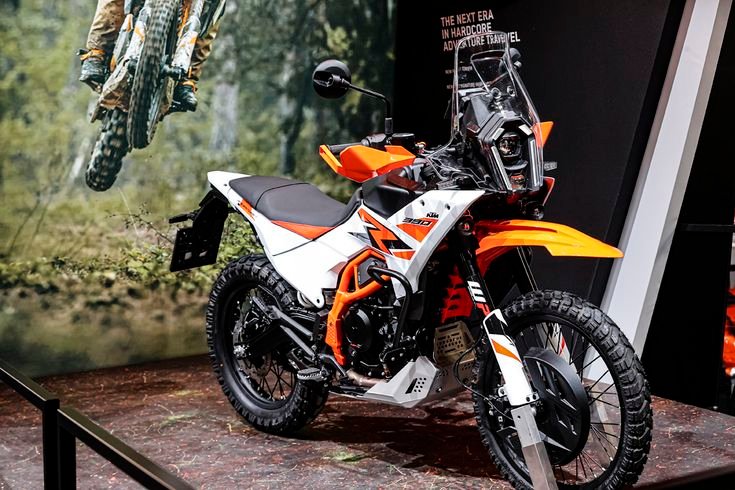
The Internet of Things (IoT) refers to the interconnected network of devices and systems that communicate with each other via the internet. In the automotive industry, IoT encompasses the integration of internet connectivity and smart technology into vehicles, enabling them to collect, exchange, and act on data. This integration enhances vehicle functionality, safety, and user experience, paving the way for smarter, more connected vehicles. This article explores the concept of IoT in cars, its applications, benefits, and future trends.
Understanding IoT in Cars
In the context of automobiles, IoT involves embedding sensors, software, and communication technologies into vehicles to enable real-time data exchange and remote monitoring. IoT-enabled cars can connect to various external systems, such as cloud services, other vehicles, and infrastructure, to enhance their capabilities and provide a seamless driving experience.
Key components of IoT in cars include:
- Sensors and Actuators: Sensors collect data from various vehicle systems, such as engine performance, tire pressure, and fuel levels. Actuators use this data to control vehicle functions, such as adjusting the suspension or braking.
- Communication Modules: Communication modules, such as cellular, Wi-Fi, and Bluetooth, enable vehicles to connect to the internet and exchange data with external systems and devices.
- Data Processing Units: Onboard computers and processing units analyze data collected from sensors and communication modules. They execute commands, make real-time decisions, and provide insights to the driver or remote systems.
- Cloud Integration: IoT-enabled cars often connect to cloud services for data storage, processing, and analysis. This allows for advanced features, such as over-the-air (OTA) updates and remote diagnostics.
- User Interfaces: Vehicles equipped with IoT technology provide user interfaces, such as infotainment systems and mobile apps, to interact with drivers and passengers. These interfaces offer access to various connected services and data insights.
Applications of IoT in Cars
- Connected Infotainment Systems
IoT enables advanced infotainment systems that offer features such as:
- Navigation and Traffic Updates: Real-time traffic data and navigation services provide drivers with the most efficient routes and alerts about road conditions.
- Streaming and Entertainment: Connectivity allows for seamless streaming of music, videos, and other media, enhancing the in-car entertainment experience.
- Voice Control and Personalization: Voice recognition and AI-driven assistants enable hands-free control of various functions and personalized settings based on user preferences.
- Vehicle-to-Everything (V2X) Communication
IoT supports V2X communication, which includes:
- Vehicle-to-Vehicle (V2V): Vehicles exchange information about their position, speed, and direction to prevent collisions and improve traffic flow.
- Vehicle-to-Infrastructure (V2I): Vehicles communicate with infrastructure elements, such as traffic lights and road signs, to receive updates on traffic signals and road conditions.
- Vehicle-to-Network (V2N): Vehicles connect to cellular networks to access cloud-based services, receive software updates, and interact with other digital services.
- Vehicle-to-Pedestrian (V2P): Vehicles communicate with pedestrians’ mobile devices to enhance safety at crosswalks and intersections.
- Remote Monitoring and Diagnostics
IoT technology allows for remote monitoring and diagnostics, including:
- Real-Time Vehicle Health Monitoring: Continuous monitoring of vehicle systems provides insights into the condition of components and alerts drivers or service centers about potential issues.
- Over-the-Air (OTA) Updates: Manufacturers can deliver software updates and new features remotely, reducing the need for service visits and ensuring that vehicles stay current with the latest technology.
- Predictive Maintenance: Data from sensors and diagnostics systems helps predict when maintenance is needed, reducing the likelihood of unexpected breakdowns and optimizing maintenance schedules.
- Enhanced Safety and Driver Assistance
IoT enhances vehicle safety through features such as:
- Advanced Driver Assistance Systems (ADAS): IoT-enabled ADAS includes functions like adaptive cruise control, lane-keeping assistance, and automatic emergency braking, which improve overall driving safety.
- Collision Avoidance and Emergency Response: IoT systems can detect potential collisions and activate safety measures, such as automatic braking or alerting emergency services in case of an accident.
- Driver Monitoring: IoT-enabled vehicles can monitor driver behavior, such as drowsiness or distraction, and provide alerts or interventions to improve safety.
- Fleet Management and Logistics
IoT technology is valuable for fleet management and logistics, offering:
- Real-Time Tracking: Fleet operators can track the location, performance, and status of vehicles in real-time, improving operational efficiency and resource allocation.
- Route Optimization: Data analytics and real-time traffic information enable optimized route planning, reducing fuel consumption and delivery times.
- Efficient Maintenance Management: Predictive maintenance and remote diagnostics help manage fleet maintenance more effectively, minimizing downtime and reducing costs.
- Personalized Driving Experience
IoT enables a more personalized driving experience by:
- Customizable Settings: Vehicles can store and recall driver preferences for settings such as seat position, climate control, and infotainment options.
- Behavior-Based Insights: Data on driving habits and usage patterns allows for personalized recommendations and adjustments to enhance comfort and efficiency.
Benefits of IoT in Cars
- Improved Safety
IoT enhances vehicle safety through real-time monitoring, advanced driver assistance systems, and predictive maintenance. By providing timely alerts and interventions, IoT helps prevent accidents and improves overall road safety.
- Enhanced Convenience
Connected infotainment systems, remote diagnostics, and over-the-air updates offer greater convenience for drivers and passengers. Seamless access to entertainment, navigation, and vehicle management features enhances the overall driving experience.
- Increased Efficiency
IoT contributes to increased efficiency through optimized route planning, predictive maintenance, and fleet management. These benefits result in cost savings, reduced downtime, and improved resource utilization.
- Better Vehicle Performance
Continuous monitoring and data analysis enable vehicles to operate at peak performance levels. IoT-driven insights help maintain optimal component health, improve fuel efficiency, and enhance overall vehicle functionality.
- Personalized Experience
IoT technology allows for a more personalized driving experience by tailoring vehicle settings and recommendations based on individual preferences and driving habits.
Challenges and Considerations
- Data Privacy and Security
The collection and transmission of vehicle data raise concerns about data privacy and security. Protecting sensitive information from unauthorized access and ensuring compliance with data protection regulations are essential.
- Connectivity and Reliability
Reliable connectivity is crucial for the effective functioning of IoT systems in vehicles. Ensuring consistent and robust communication with external networks and systems is important for maintaining vehicle performance and safety.
- Integration and Compatibility
Integrating IoT technology with existing vehicle systems and ensuring compatibility across different manufacturers and models can be challenging. Standardization and interoperability are key to successful implementation.
- Cost and Complexity
The implementation of IoT technology involves costs related to hardware, software, and ongoing maintenance. Balancing these costs with the benefits of IoT is important for vehicle manufacturers and consumers.
- Regulatory and Legal Issues
As IoT technology evolves, regulatory and legal frameworks must adapt to address issues related to data usage, cybersecurity, and vehicle safety. Ensuring compliance with evolving regulations is critical for successful IoT deployment.
Future Trends in IoT for Cars
- Advancements in Connectivity
The future of IoT in cars will see advancements in connectivity technologies, such as 5G, which will enable faster and more reliable communication between vehicles, infrastructure, and external systems.
- Integration with Autonomous Vehicles
IoT will play a crucial role in the development and deployment of autonomous vehicles, providing the necessary connectivity and data exchange for safe and efficient self-driving operations.
- Enhanced Smart City Integration
IoT-enabled vehicles will increasingly integrate with smart city infrastructure, contributing to more efficient traffic management, improved urban mobility, and enhanced environmental sustainability.
- Evolution of In-Car AI and Machine Learning
The integration of AI and machine learning with IoT technology will lead to more sophisticated vehicle features, including advanced driver assistance systems, personalized recommendations, and predictive maintenance.
- Expansion of Vehicle-to-Everything (V2X) Communication
The scope of V2X communication will expand, enabling more comprehensive interactions between vehicles, infrastructure, and other entities, leading to improved traffic flow, safety, and efficiency.
Conclusion
The Internet of Things (IoT) is transforming the automotive industry by enabling vehicles to become more connected, intelligent, and responsive. Through the integration of sensors, communication technologies, and data analytics, IoT enhances vehicle functionality, safety, and user experience. As technology continues to advance, IoT in cars will play an increasingly important role in shaping the future of transportation, contributing to smarter, more efficient, and more connected mobility solutions.





